Library Advocacy Through Books
I think this is an awesome story, and a wonderful thing to come out of writing Sonderbooks:
Last June, I read and reviewed Marilyn Johnson’s wonderful book, This Book Is Overdue! How Librarians and Cybrarians Can Save Us All. At the time, our county library system had just undergone $2,673,257 worth of budget cuts, losing 70 positions, most of them librarians. This was on top of 18% cuts the previous fiscal year, so any fluff was already gone.
My own job was one that was cut. The county transferred me to another county agency, to a position in the same paygrade. The new position had much less responsibility, was much less challenging, and did not require a Master’s degree (I have two, and a Librarian position requires one). Yet it was the same paygrade, or was then — that position has since been upgraded.
To add insult to injury, months later the Fairfax County Board of Supervisors met to decide what to do with a $24 million “carryover.” This was EIGHT TIMES the amount cut from the library system — so it showed that devastating the library system with drastic cuts in hours and staff had not actually been needed, did not actually make a difference in the big scheme of things. Another affront was the millions given to the schools after the budget process because they threatened to cut certain programs that helped low-income students. Surely the board could have “found” $2.67 million just as easily if they had realized the true importance of libraries to Education and to Human Services, which they claim are priorities.
As I said in my review, “In the campaign to convince the community and particularly the Board of Supervisors that public libraries are essential services, not luxuries, I became more and more proud to be a librarian.
“We were not successful, and I’m very sad to leave the job I love, and very sad for the community. The people who will be particularly hurt by the budget cuts are students who don’t have internet access, people out of work looking for jobs, people who need to learn English, homeless people who want somewhere to stay and learn during the day, young moms who want to get their children comfortable around books, and so many others.”
On New Year’s Day, I announced my 2010 Sonderbooks Stand-outs, and definitely chose This Book Is Overdue!. (It’s brilliant!) This week, I got the Sonderbooks Stand-out seal on the page of the book review.
Apparently the change put my review on Marilyn Johnson’s Google Alert, so today I got an e-mail from her thanking me for the enthusiastic review. (My pleasure — She should be thanked for writing such a great book!)
In my review, I said, “This book is indeed overdue! I wished so much that I could afford to send a copy to each member of the county Board of Supervisors! Marilyn Johnson looks at many different aspects of librarianship and explains why we need librarians more than ever in the information age, as well as in a recession.”
So here’s the awesome part: Marilynn Johnson told me that the book is just coming out in paperback, and she has some extra copies of the hardcover. She will send me copies of the book to send to the Board of Supervisors!
I’m jumping the gun a little by mentioning this now. I’m going to participate with the various Library Friends’ Groups to send the books, making it from the group, not simply from one individual. We will try to get as much publicity as possible when we are ready to send the books.
I do not expect the Fairfax County Board of Supervisors to restore Library funding any time soon. But I want to point out that the budget cuts already in place have hurt the community far more than they have helped. The Board claims that their priorities include Education and Human Services, yet libraries provide both of those things — and to EVERYONE in the community, not just those at certain age levels, and not just those who qualify.
I think many times well-off people assume that because libraries are a luxury to them, something they can do without, that’s how it is for everyone. They don’t think about the seniors trying to file their taxes on the internet for the first time because the government isn’t mailing forms. They don’t think about people learning English without a lot of money for classes and courses on CD. They don’t think about people who don’t have internet access and need to apply for jobs or do their homework on the library computers. They don’t think about families with young children who come to the library to give their children a good start and preparation for learning to read. They don’t think about how Summer Reading Programs keep children’s skills current during the summer. They don’t even think about people who can’t afford to buy the latest bestsellers and now have a longer wait before they can read a library copy.
Marilyn Johnson’s book points out so many of those things. I’m hoping that with enough publicity, once they have a book in hand, the Board members might even read it. And then they might, just maybe, realize that public libraries are one of the most cost-effective ways to provide for Education and Human Services in Fairfax County.
In a personal happy ending for me, I am now back working in a library, and I am so glad. I’m at a different branch, and now I’m seeing more people who are homeless using our services, as well as more people pursuing important research. (It’s a bigger and busier branch.) The library is tremendously busy, and if hours were restored, would simply be filled longer. As Eleanor Crumblehulme has said, “Cutting libraries in a recession is like cutting hospitals in a plague.” Support Education. Support Human Services. Restore Library Funding.
Note: This is my own personal blog, and I am writing this entirely on my own time. The opinions expressed are entirely my own. Any action we take is NOT an official act of my employer and does not imply any sponsorship by Fairfax County Public Library.

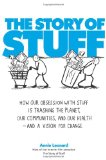
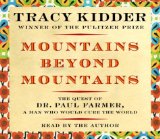
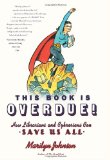
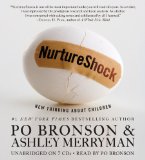
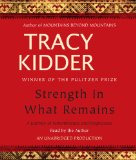

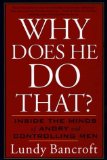
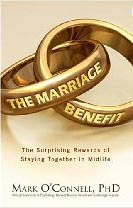 The Marriage Benefit
The Marriage Benefit